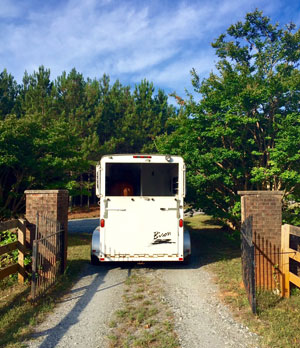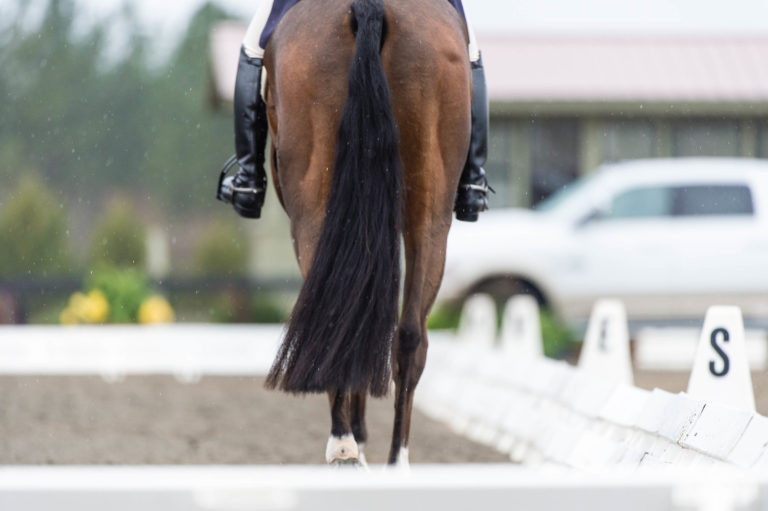Because I remain a part time actress (meaning I’m rarely offered an acting job these days) to supplement horse bills, every now and then I get an offer I can’t refuse and that offer, in August, was to fly back to L.A. to guest star in the ‘sequel’ to a sitcom I did for several years in the 90s, ‘Coach.’ Even though NBC chose not to air it (or bafflingly, continue with the 13 episodes it ordered and paid for), I was incredibly grateful to appear in the pilot, see and hug old friends, and really, take a bit of a sorely needed vacay. This meant Forrest had half of August off, so we started back to work gradually and carefully and after then dealing with the niggling effects of a close nail in his left fore, it was well into September before we got back into our groove.
Comfortable that he was solidly confirmed in his trot/canter transitions, we’ve just begun to tackle ‘skip a gait,’ or, essentially, a walk-to-canter transition. My pilot’s check list of prerequisites include a horse that is on the aids in all three gaits, and clearly understands my canter aids: a half halt (that actually ‘goes through’), an inside seat bone that slides forward, an inside leg for support and and outside leg, sliding slightly back, that asks for the inside lead.
Forrest ‘gets’ all that for the trot-to-canter transition, so what else can I do to help him understand and take more weight behind so that the strike off for him will be easier? Well, hey kids, let’s watch!
The first thing I do, after a a nice, stretchy, warm up, is pick up a purposeful trot on a 20-meter circle that is balanced and has me riding from inside leg into outside rein.
And then, easy-peasy, we pick up the canter toward the end of the circle…

Now, as we begin our next circle, I begin to spiral Forrest in, which obliges him to take more weight behind, and as we finish this smaller circle, I half halt strongly and do my best to bring Forrest back to a walk with as few trot steps as possible. I think of an airplane landing as I bring him down: back wheels first, and then nose gear, so he lands in a nice, balanced, active, walk.

I’ve really got to be on my game, here, because as my horse is nicely set up and really paying attention to me (instead of our cat, Timmy, who shot out of the woods and scared the crap outta him a couple of minutes ago), I don’t want to waste time … this is the perfect time to ask for the canter depart from the walk. I half halt with my outside rein, slide my inside seat bone forward, close my legs and vocally add the command he knows well, “Annnnd canTER!”


Boy, am I pleased with this effort! And as he comes around, check out how quickly the quality of his canter has improved with his ability to sit more behind. As we finish the circle, he also gives me some pretty fancy steps of trot that I allow him to land in, before going into a stretch as I immediately let him quit on such an obedient effort:

This was hard work for Forrest and I don’t ask him to repeat the exercise to the right, which will be more difficult for him … we’ll try that our next ride. This time, I want him to end his lesson with my praise ringing in his ears: “WHAT a good boy! You are so SMART!” I swear I can feel his chest puff out!













